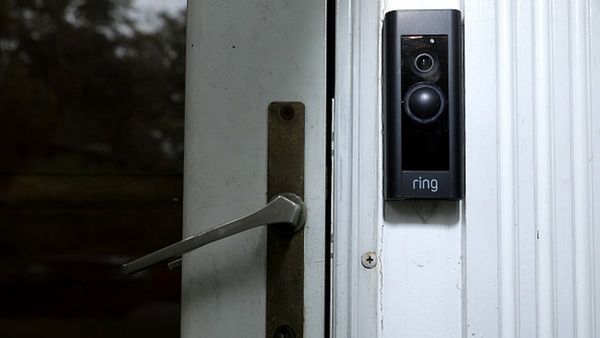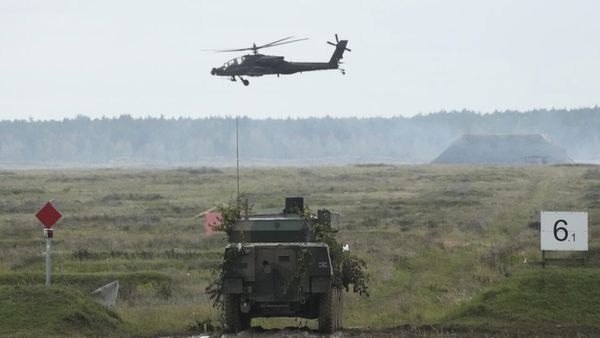
A unique anthology film by eight female filmmakers from Pacific Island cultures that portrays a single yet varied fictional life story, Vai (2019) captures the multifaceted experience of being a Pasifika (Pacific Islander) woman while maintaining a dexterous continuity of style and mood.
Vai is technically similar to the previous film by producers Kerry Warkia and Kiel McNaughton, Waru (2017). Both are thematically unified anthology films with long takes and predominantly Pasifika elements (actors, locations, etc.), but whereas Waru revolves around a single key incident, Vai develops linearly to paint a resonant portrait of a life well-lived. Each 10-minute segment is a one- or two-take vignette that covers a surprising amount of plot development and thematic complexity.

The protagonist is always named a variation of Vai, which means water in all the indigenous languages spoken in the film. As the source of Pasifika lifeblood and traditions, water is present in every segment, and its prominence or absence serves to symbolize the ups and downs of Vai’s life. That life, and the conceit of the film, are revealed gradually. When the film cuts from one segment to another (editing by Dione Chard), it opens on a new location and lead actress. But as each protagonist’s backstory is alluded to, we start to realize that this matriarch is the same woman who defended her home from purse seining, who dreaded her family’s first big move, who later studied abroad.
Although specific details change with each segment as if to echo the kaleidoscopic casting and locations, the overall trajectory of her life is clear and powerful. There’s also a hint of magical realism, often but not always linked to tradition and ritual. Throughout, cinematographer Drew Sturge has masterful control of the camera, going underwater or onto vehicles often in one continuous shot.
On a sun-drenched Fiji, the seven-year-old Vai spends the last carefree day of her tropical childhood anxious about her family’s move to New Zealand for her education, leaving Nana (Liliame (Mima) Radinasawa Mati) behind. The idyll of childhood is felt in the almost magical sunlight just preceding a tropical storm. The child has no worries or responsibilities yet, but the furrowed brows of the adults in her life signal that Pasifika life isn’t as perfect as the weather might suggest.

Whether it’s being too poor to afford fresh water, being separated from her family to pursue a future elsewhere, or returning home to defend it from foreign interests, Vai’s life is anything but idyllic. Each segment highlights a meaningful episode in her life, one that shapes her as a person or expresses who she is. And being shown these events from Vai's perspective avoids the all-too-often exoticizing gaze of the camera toward indigenous peoples, allowing us to share in Vai’s tribulations and triumphs. Though the writing or acting sometimes err on the side of didacticism, not a single moment is boring.
From personal development to a return to roots; from community bugbear to clan matriarch; from one generation to the next, and the next after that -- these segments round out the picture of a woman’s journey ensconced in, sacrificing herself for, and supporting her culture and traditions. The long takes contrast strongly with the tensions that burden the protagonist and the abrupt reversals that often conclude each segment, highlighting the continuity of a life and its social connectedness in the face of the unpredictability of fate.
In the concluding segment, set in Aotearoa (the Māori name for New Zealand), the 80-year-old Vai is guided to a mountain stream by two generations of her descendants to perform a blessing ritual on a newborn member of the third generation. Frail yet dignified and sporting a Māori tattoo on her chin, she is not so much in charge of the surprisingly simple ritual but more of a receiver of its celebration and veneration. Though she’s on the cusp of life’s end, the concluding sunlit shot of baby in matriarch’s arms evokes the cycles of life, nature, and tradition. It’s a shot that, with the rare addition of Lauren King’s aspirational score, echoes the project of the entire film: to show how culture and tradition unify disparate strands of a people despite all the challenges of modernity.
Credits for each segment:
- “Fiji,” written by Nicole and Sharon Whippy, directed by Nicole Whippy, starring Ro Mereani Adi Tuimatanisiga
- “Tonga,” written and directed by ‘Ofa-Ki-Levuka Guttenbeil-Likiliki, starring Ar-Ramadi Longopoa
- “Solomon Islands,” written and directed by Matasila Freshwater, starring Betsy Luitolo
- “NZ Born Samoan,” written and directed by Amberley Jo Aumua, starring Agnes Pele
- “Kuki Airani (Cook Islands),” written and directed by Mīria George, starring Evotia-Rose Araiti
- “Samoa,” written and directed by Marina Alofagia McCartney, starring Fiona Collins
- “Niue,” written and directed by Dianna Fuemana, starring Maliaga Erick
- “Aotearoa (New Zealand),” written and directed by Becs Arahanga, starring Hinetu Dell
The 2019 Women Make Waves Film Festival takes place from 10/4 to 10/14 at SPOT Huashan Cinema in Taipei. This review is based on a complimentary media screener.
TNL Editor: Daphne K. Lee (@thenewslensintl)
If you enjoyed this article and want to receive more story updates in your news feed, please be sure to like our Facebook page below.







